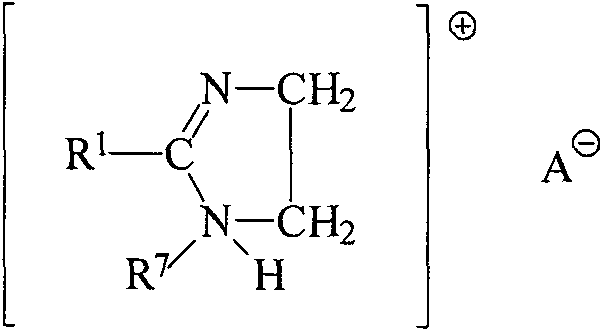Fabric maintenance softener
A softener and fabric technology, applied in the field of fabric maintenance and softener, can solve the problem that the softener is difficult to achieve color protection and color fixing effects, and achieve the effects of reducing color loss, reducing dye loss and improving lubrication.
- Summary
- Abstract
- Description
- Claims
- Application Information
AI Technical Summary
Problems solved by technology
Method used
Image
Examples
Embodiment 1
[0134] Embodiment 1 group distribution ratio:
[0135] Table 1, composition ratio list (ingredient unit: %)
[0136]
[0137] The components listed in Table 1 are commercially available products commonly used in the washing products industry, and the components of the notes are as follows:
[0138] 1) The fragrance can be: various fragrances used in fabrics or personal care products, such as fragrance type and floral type.
[0139] 2) The preservative can be: a mixture of 2-methyl-4-isothiazolin-3-one and 5-chloro-2-methyl-4-isothiazolin-3-one.
[0140] 3) Anti-color channeling agent (also known as dye transfer inhibitor) can be: polyvinylpyrrolidone (PVP), copolymer of N-vinylpyrrolidone and N-vinylimidazole (PVPVI) and poly(4-vinylpyridine -N-oxide) (PVNO).
[0141] 4) The dispersant can be: sodium polyacrylate and sodium carboxymethylcellulose (CMC).
[0142] 5) The enzyme preparation can be: commercially available protease, lipase, cellulase, amylase, which can be p...
Embodiment 2
[0145] Example 2 Preparation of fabric maintenance softener
[0146] Table 2, now take the fabric maintenance softening agent represented by example 1 in the preparation table 1 as an example:
[0147] group classification
[0148] 2 grams of DC2-8822A (100% active) was mixed with 4 grams of cetyltrimethylammonium chloride (25% active) with a mechanical stirrer. After the mixture became a homogeneous viscous phase, 64 grams of distilled water was injected therein at a rate of 1 gram per second and heated to 60° C. while continuing to stir. During this process, the mixture first goes through the water-in-oil emulsion stage and then becomes an oil-in-water emulsion. Another 9.4 g of dihydrogenated tallow dimethyl ammonium chloride (85% active) was heated to 60° C., and then slowly added to the stirring silicone oil emulsion configured above. After that, 10 grams of polyquaternium-7 aqueous solution (10% activity), 4 grams of CARTAFIX CB (25% activity), 1 gram of ethy...
Embodiment 3
[0149] Example 3 Preparation of fabric maintenance softener
[0150] Table 3, now take the fabric maintenance softening agent represented by example 4 in the preparation table 1 as an example:
[0151] group classification
[0152] With 15 grams of polyquaternium-6 aqueous solution (10% activity), 3 grams of formaldehyde-free fixing agent SD201 (50% activity), 2.5 grams of tridecyl polyoxyethylene ether 8 (20% activity), 2 grams of ten Hexaalkyltrimethylammonium chloride (25% active) was mixed with 50 grams of distilled water with a mechanical stirrer and heated to 60°C. Another 17 grams of Degussa VARISOFT 222 (90% active) was heated to 60° C., and slowly added to the stirring mixture configured above. After that, 1 gram of citric acid (20% active), 1 gram of 2-methyl-4-isothiazolin-3-one (20% active), 5 grams of poly(4-vinylpyridine-N-oxide ) (10% active), 2 grams of methyl silicone oil emulsion (5% active), added to the stirring bulk emulsion configured above. ...
PUM
 Login to View More
Login to View More Abstract
Description
Claims
Application Information
 Login to View More
Login to View More - R&D
- Intellectual Property
- Life Sciences
- Materials
- Tech Scout
- Unparalleled Data Quality
- Higher Quality Content
- 60% Fewer Hallucinations
Browse by: Latest US Patents, China's latest patents, Technical Efficacy Thesaurus, Application Domain, Technology Topic, Popular Technical Reports.
© 2025 PatSnap. All rights reserved.Legal|Privacy policy|Modern Slavery Act Transparency Statement|Sitemap|About US| Contact US: help@patsnap.com



